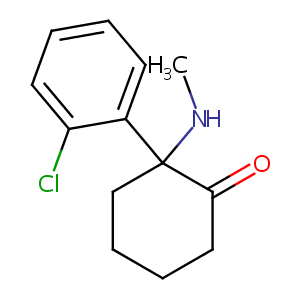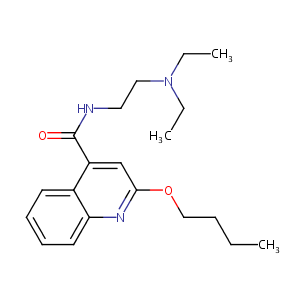| 1 |
ClinicalTrials.gov (NCT02462174) Topical Ketamine Versus Caudal Ketamine for Postoperative Analgesia in Children Undergoing Inguinal Herniotomy
|
| 2 |
FDA Approved Drug Products from FDA Official Website. 2019. Application Number: (ANDA) 076092.
|
| 3 |
Ketamine FDA Label
|
| 4 |
ClinicalTrials.gov (NCT04365985) Study of Immunomodulation Using Naltrexone and Ketamine for COVID-19. U.S. National Institutes of Health.
|
| 5 |
URL: http://www.guidetopharmacology.org Nucleic Acids Res. 2015 Oct 12. pii: gkv1037. The IUPHAR/BPS Guide to PHARMACOLOGY in 2016: towards curated quantitative interactions between 1300 protein targets and 6000 ligands. (Ligand id: 7159).
|
| 6 |
Dibucaine FDA Label
|
| 7 |
Ketamine-induced bladder fibrosis involves epithelial-to-mesenchymal transition mediated by transforming growth factor-1. Am J Physiol Renal Physiol. 2017 Oct 1;313(4):F961-F972. doi: 10.1152/ajprenal.00686.2016. Epub 2017 Mar 22.
|
| 8 |
Ketamine modulates theta and gamma oscillations. J Cogn Neurosci. 2010 Jul;22(7):1452-64.
|
| 9 |
Contribution of CYP3A4, CYP2B6, and CYP2C9 isoforms to N-demethylation of ketamine in human liver microsomes. Drug Metab Dispos. 2002 Jul;30(7):853-8.
|
| 10 |
Cytoskeleton interruption in human hepatoma HepG2 cells induced by ketamine occurs possibly through suppression of calcium mobilization and mitochondrial function. Drug Metab Dispos. 2009 Jan;37(1):24-31.
|
| 11 |
Ketamine hypertension and the renin-angiotensin system. Clin Exp Hypertens A. 1983;5(6):875-83. doi: 10.3109/10641968309081814.
|
| 12 |
Cellular consequences triggered by ketamine on exposure to human glioblastoma epithelial (LN-229) cells. J Biochem Mol Toxicol. 2023 Dec;37(12):e23484. doi: 10.1002/jbt.23484. Epub 2023 Jul 29.
|
| 13 |
Ketamine cystitis as a mimic of carcinoma in situ. Histopathology. 2009 Dec;55(6):705-8. doi: 10.1111/j.1365-2559.2009.03437.x.
|
| 14 |
Ketamine promotes the amyloidogenic pathway by regulating endosomal pH. Toxicology. 2022 Apr 15;471:153163. doi: 10.1016/j.tox.2022.153163. Epub 2022 Apr 1.
|
| 15 |
Lipoxin A4 methyl ester attenuated ketamine-induced neurotoxicity in SH-SY5Y cells via regulating leptin pathway. Toxicol In Vitro. 2023 Jun;89:105581. doi: 10.1016/j.tiv.2023.105581. Epub 2023 Mar 11.
|
| 16 |
Apoptotic insults to human HepG2 cells induced by S-(+)-ketamine occurs through activation of a Bax-mitochondria-caspase protease pathway. Br J Anaesth. 2009 Jan;102(1):80-9. doi: 10.1093/bja/aen322. Epub 2008 Nov 9.
|
| 17 |
The apolipoprotein E epsilon 4 allele is associated with blunting of ketamine-induced psychosis in schizophrenia. A preliminary report. Neuropsychopharmacology. 1998 Nov;19(5):445-8. doi: 10.1016/S0893-133X(98)00031-1.
|
| 18 |
Halothane attenuates the cerebroprotective action of several Na+ and Ca2+ channel blockers via reversal of their ion channel blockade. Eur J Pharmacol. 2002 Oct 4;452(2):175-81.
|
| 19 |
Screening of a chemical library reveals novel PXR-activating pharmacologic compounds. Toxicol Lett. 2015 Jan 5;232(1):193-202. doi: 10.1016/j.toxlet.2014.10.009. Epub 2014 Oct 16.
|
| 20 |
Why are most phospholipidosis inducers also hERG blockers?. Arch Toxicol. 2017 Dec;91(12):3885-3895. doi: 10.1007/s00204-017-1995-9. Epub 2017 May 27.
|
| 21 |
A further factor contributing to inherited suxamethonium sensitivity. Br J Anaesth. 1969 Dec;41(12):1023-8. doi: 10.1093/bja/41.12.1023.
|
|
|
|
|
|
|


